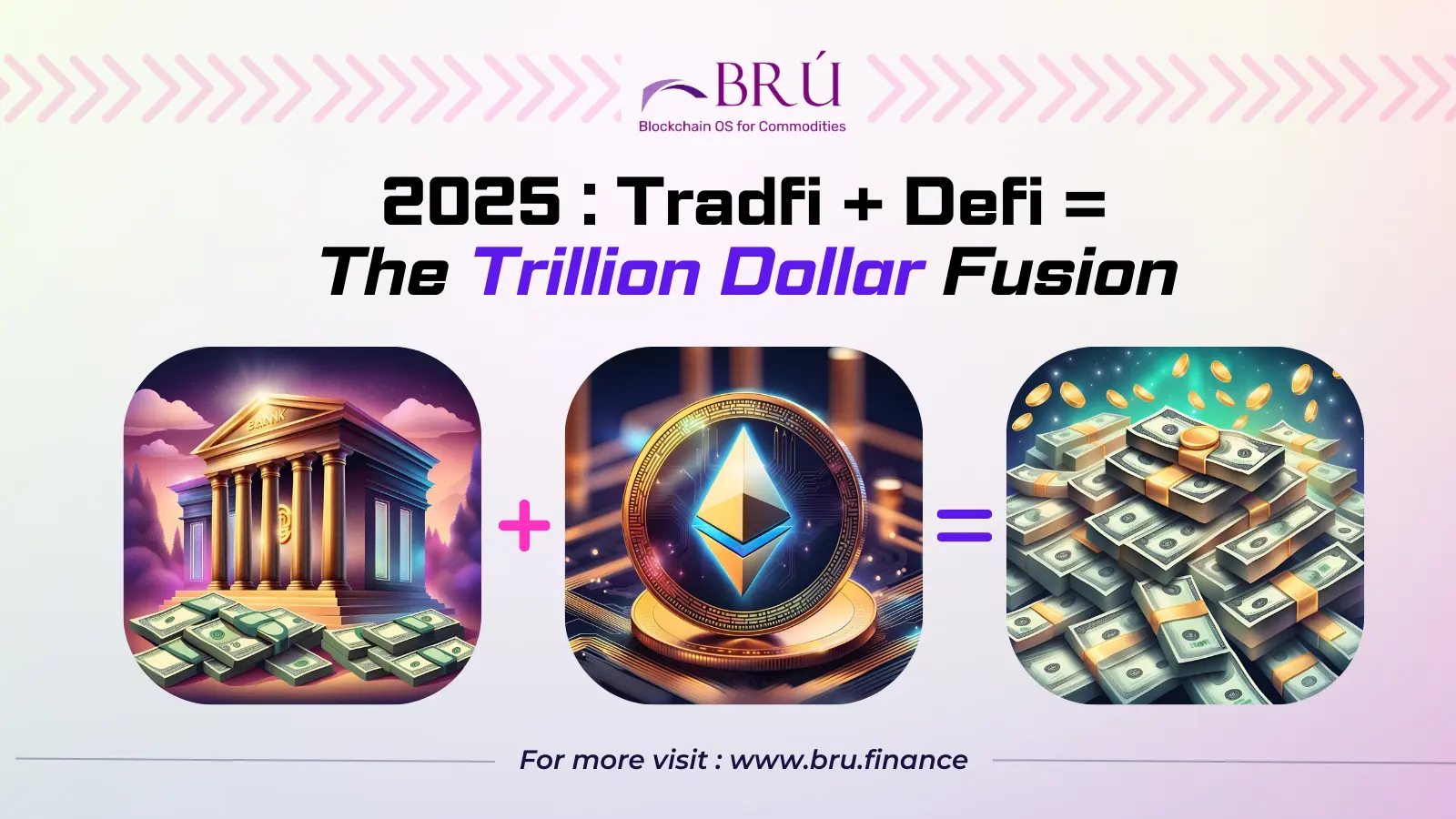
2025: TradFi + DeFi = The Trillion Dollar Fusion
Published On : January 18, 2025
For years, Traditional Finance (TradFi) and Decentralized Finance (DeFi) have been seen as distinct realms—each with its own advantages and drawbacks. TradFi has long been synonymous with stability and regulation, while DeFi offers innovation and inclusivity. But recently, these two worlds have begun to converge, unlocking what many believe could be a trillion-dollar opportunity rooted in real-world assets. This fusion has the potential to redefine finance by making it more inclusive, efficient, and accessible on a global scale.
Traditional Finance represents the established, centralized financial systems—banks, investment firms, and insurance providers—that have operated for centuries. It offers stability and security but is often criticized for exclusivity, inefficiency, and limited accessibility, especially for the unbanked and underbanked populations worldwide.
On the other hand, Decentralized Finance, a much younger contender, emerged with blockchain technology as its backbone. DeFi thrives on decentralization, open-access platforms, and smart contracts, offering higher returns and greater financial inclusivity. Yet, it’s not without its flaws, grappling with regulatory uncertainty, security vulnerabilities, and market volatility.
The Convergence: Real-World Assets Enter DeFi
The line between TradFi and DeFi is now blurring, thanks to the tokenization of real-world assets (RWAs). This game-changing development involves bridging tangible assets like real estate, stocks, and commodities with blockchain technology. Here’s why this convergence is revolutionary:
- Enhanced Security and Transparency
Blockchain technology creates an immutable and transparent ledger, reducing fraud and manipulation risks. Tokenizing assets ensures secure ownership records accessible to all stakeholders. - Global Access to Investment
Tokenized real-world assets make it possible for anyone with internet access to invest in properties, art, or equities across the globe. This democratizes investment opportunities, transcending geographical boundaries. - Fractional Ownership
High-value assets like commercial properties or rare art become accessible through fractional ownership. Tokenization allows individuals to invest in small portions, diversifying their portfolios without requiring significant capital. - Unprecedented Liquidity
Historically illiquid assets, such as real estate or private equity, can now be traded seamlessly on DeFi platforms. This injects liquidity into traditionally static markets. - Reduced Costs and Increased Efficiency
By eliminating intermediaries and automating processes, DeFi drastically lowers transaction costs and management fees.
Platforms like Brú Finance exemplify the transformative potential of this convergence. By issuing fractional, commodity-backed bonds, Brú enables investments in real-world agricultural assets with over 140% collateralization. Liquidity providers can access these six-month bonds, earning attractive yields while contributing to financial inclusion.
What sets Brú Finance apart is its focus on sustainability and empowering farmers and small businesses. Retail liquidity providers benefit from fractional ownership, making these bonds accessible to a broader audience. This approach amplifies asset liquidity while championing social impact.
While the TradFi-DeFi fusion is promising, hurdles remain:
- Regulatory Complexity: Balancing compliance with decentralization is a delicate task as governments work to adapt existing laws to this new paradigm.
- Security Concerns: DeFi platforms must strengthen protections against hacks and vulnerabilities to gain investor trust.
A Trillion-Dollar Vision
The tokenization of real-world assets in DeFi is a paradigm shift with the potential to create a trillion-dollar market. Picture owning a fraction of a luxury resort in Bali, investing in renewable energy projects in Africa, or trading rare art—all from your smartphone, and all secured by blockchain transparency.
This convergence isn’t just about technology—it’s about reimagining finance. It’s about making investment opportunities more accessible, affordable, and global. While challenges remain, the blend of TradFi and DeFi is poised to unlock unprecedented opportunities, democratizing finance and reshaping the way we think about wealth in the digital age.
As the momentum builds, one thing is clear: the future of finance is neither purely traditional nor entirely decentralized—it’s the best of both worlds.
For more updates and latest news about Brú Finance, please join our Twitter Channel, Discord server, LinkedIn, Telegram at
Please join our Discord events and Twitter AMAs to connect directly with our founders and ask your queries.
Discord: https://discord.gg/8C9SZXDy2r
Telegram Channel : https://t.me/bruofficial
Twitter : https://twitter.com/bru_finance
LinkedIn : https://www.linkedin.com/company/bru-finance/
Facebook :https://www.facebook.com/brufinance/
Instagram :https://www.instagram.com/brufinance/?igshid=YmMyMTA2M2Y%3D

 1.png)